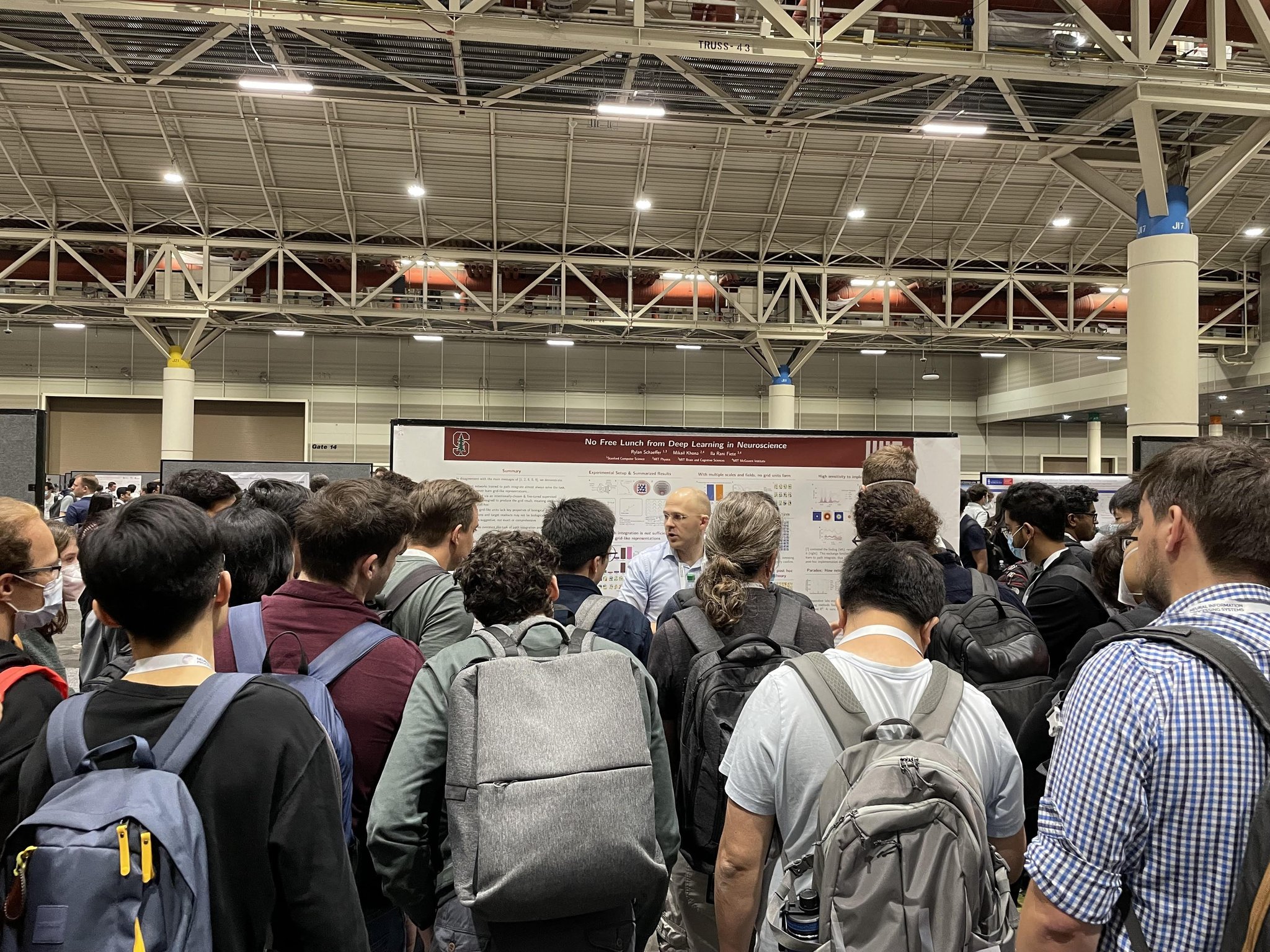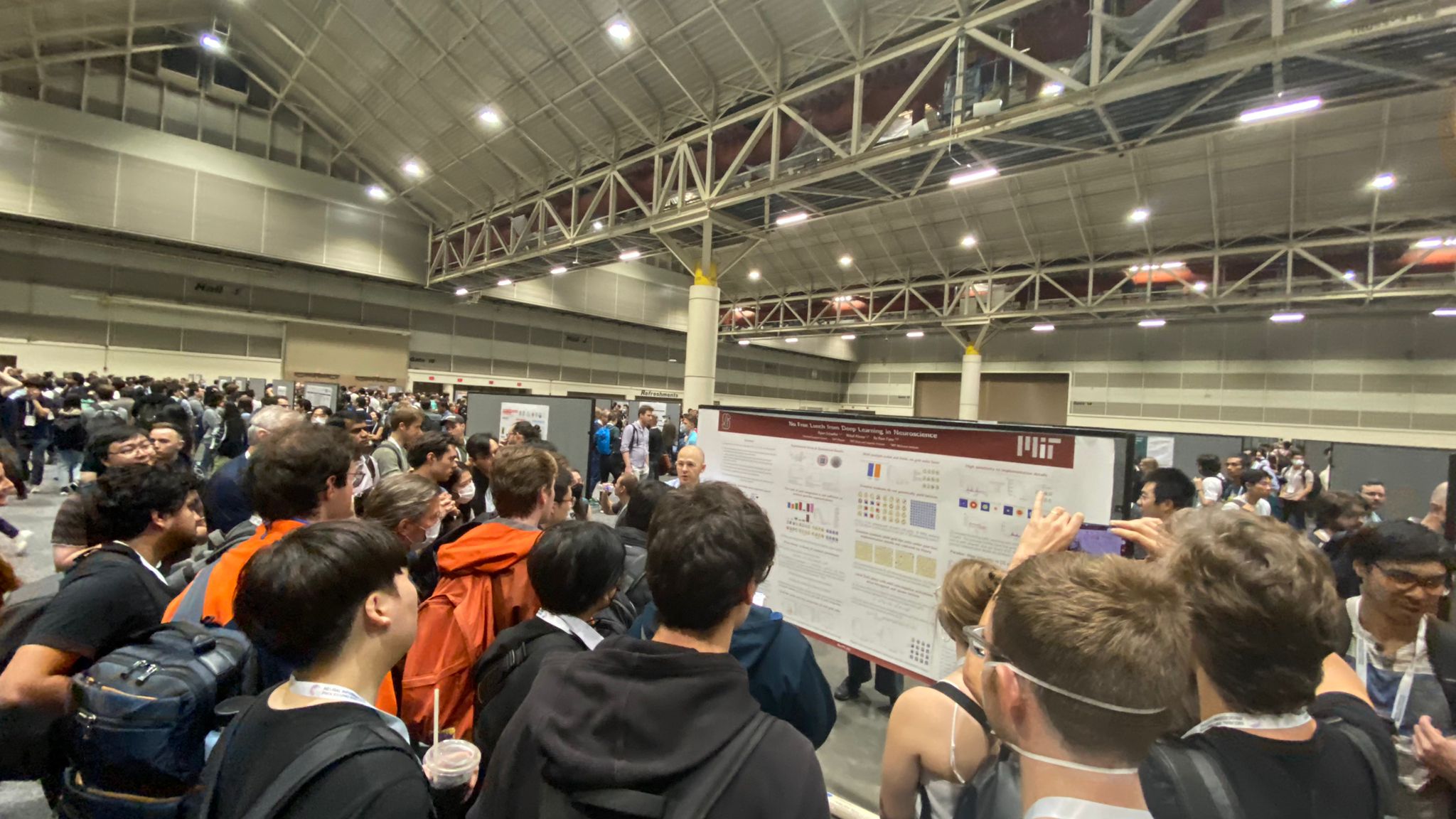Rylan Schaeffer

Resume
Research
Learning
Blog
Teaching
Jokes
Kernel Papers
No Free Lunch from Deep Learning in Neuroscience: A Case Study through Models of the Entorhinal-Hippocampal Circuit
Authors: Rylan Schaeffer, Mikail Khona, Ila Rani Fiete
Venue(s): NeurIPS 2022
Quick Links
Summary
Very excited to announce our #NeurIPS2022 paper No Free Lunch from Deep Learning in Neuroscience: A Case Study through Models of the Entorhinal-Hippocampal Circuit.
It’s a story about NeuroAI, told through a story about grid & place cells.
Joint w/ @KhonaMikail @FieteGroup 1/15
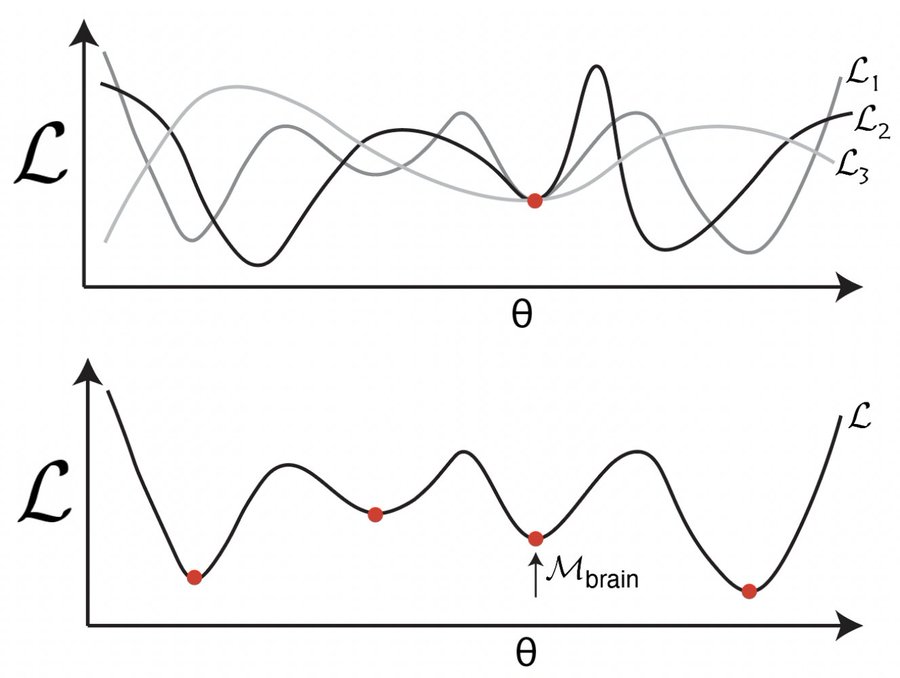
The promises of deep learning-based models of the brain are that they (1) shed light on the brain’s fundamental optimization problems/solutions, and/or (2) make novel predictions. We show, using deep network models of the MEC-HPC circuit, that one may get neither! 2/15
Prior work claims training networks to path integrate generically creates grid units (left). We empirically show & analytically explain why grid-like units only emerge in a small subset of biologically invalid hyperparameter space chosen post-hoc by the programmer (right). 3/15
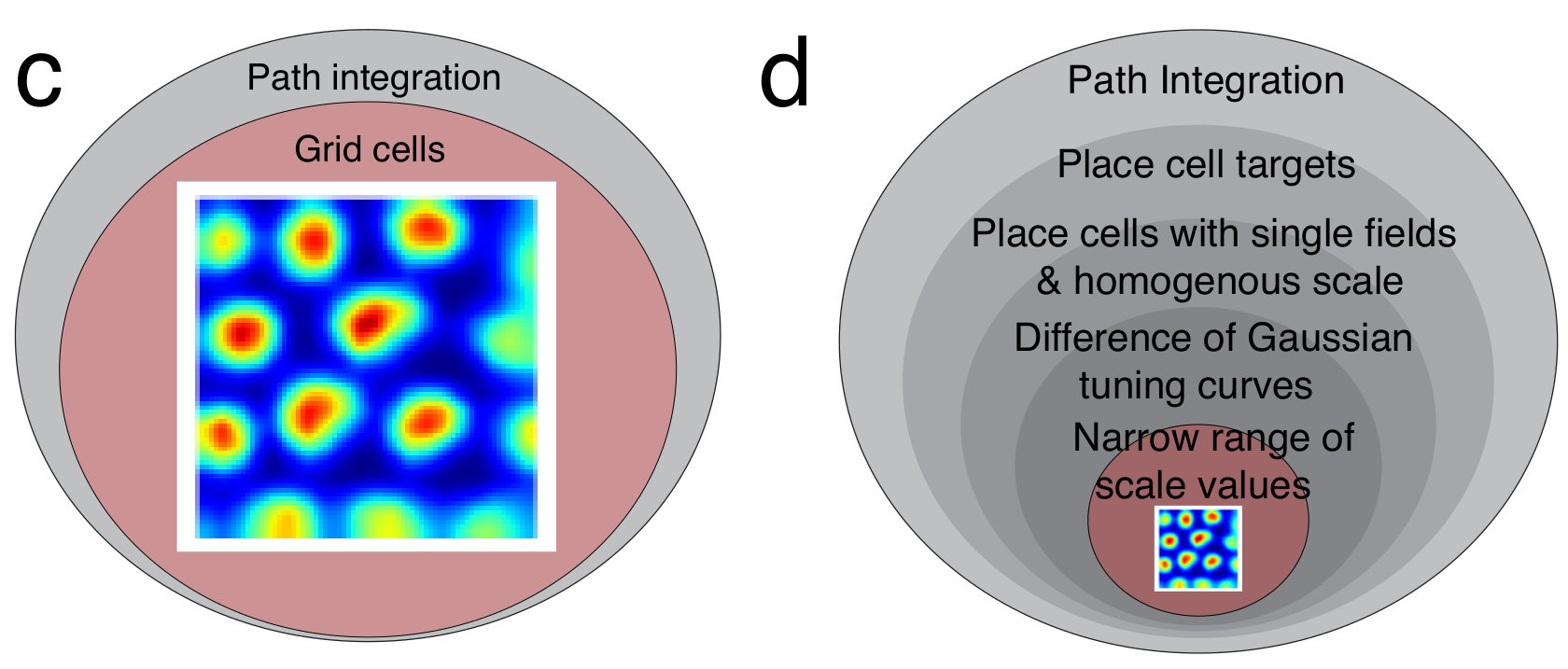
Result 1: Of the >11,000 networks we trained, most learned to accurately path integrate but <10% of networks able to so exhibited possible grid-like units (using a generous measure of “grid-like”). Path integration does not create grid units! 4/15
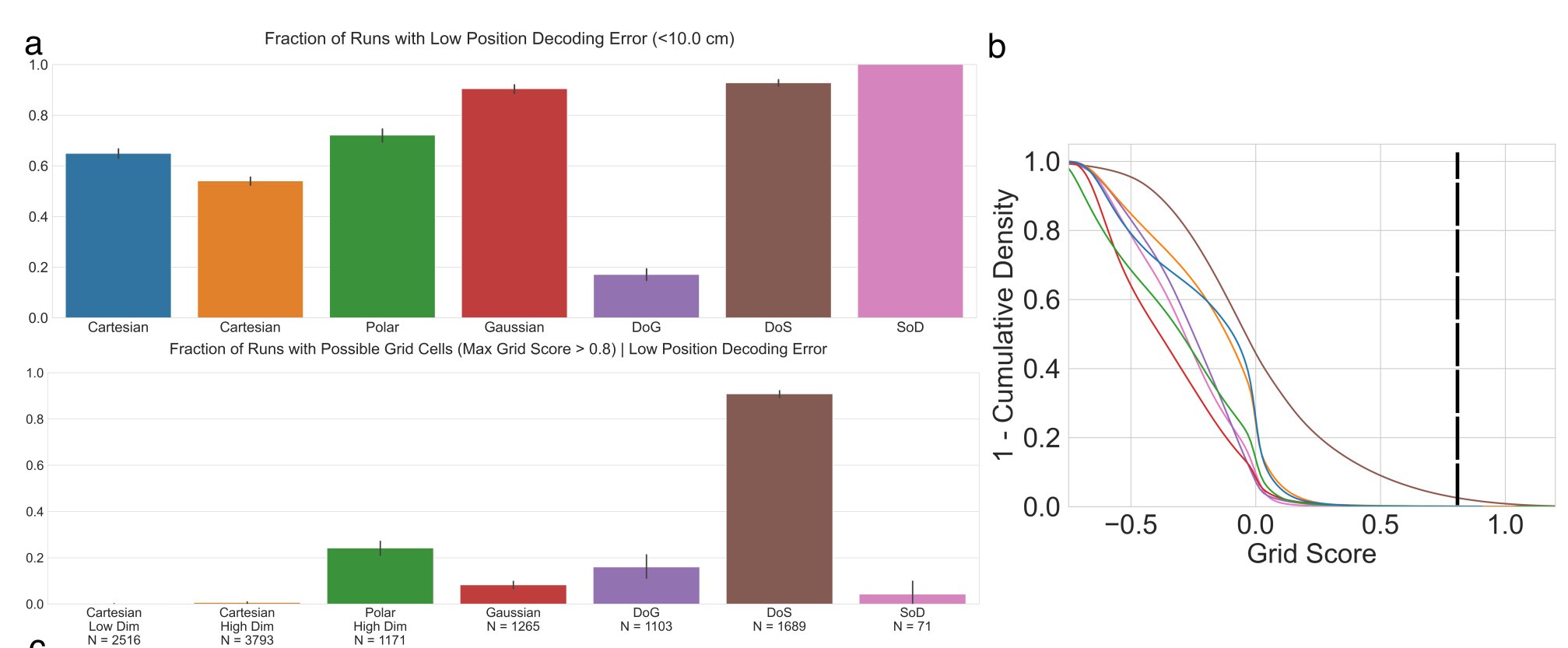
Result 2: Grid units emerge only under a specific (& problematic - more later!) supervised target encoding. Cartesian & Radial readouts never yielded grid units, nor did Gaussian-shaped place cell-like readouts. Difference-of-Softmaxes readouts are necessary! 5/15

What is this choice of supervised target, and why is it problematic? To produce grid-like units, the “place cell” population must have: (i) a single field per place cell, (ii) a single population-wide scale, (iii) a specific tuning curve called a Difference of Softmaxes. 6/15

But real place cells don’t have any of these! Place cells have (i) multiple fields per cell, with (ii) heterogeneous scales, and (iii) diverse tuning curves nothing like Difference-of-Softmaxes.
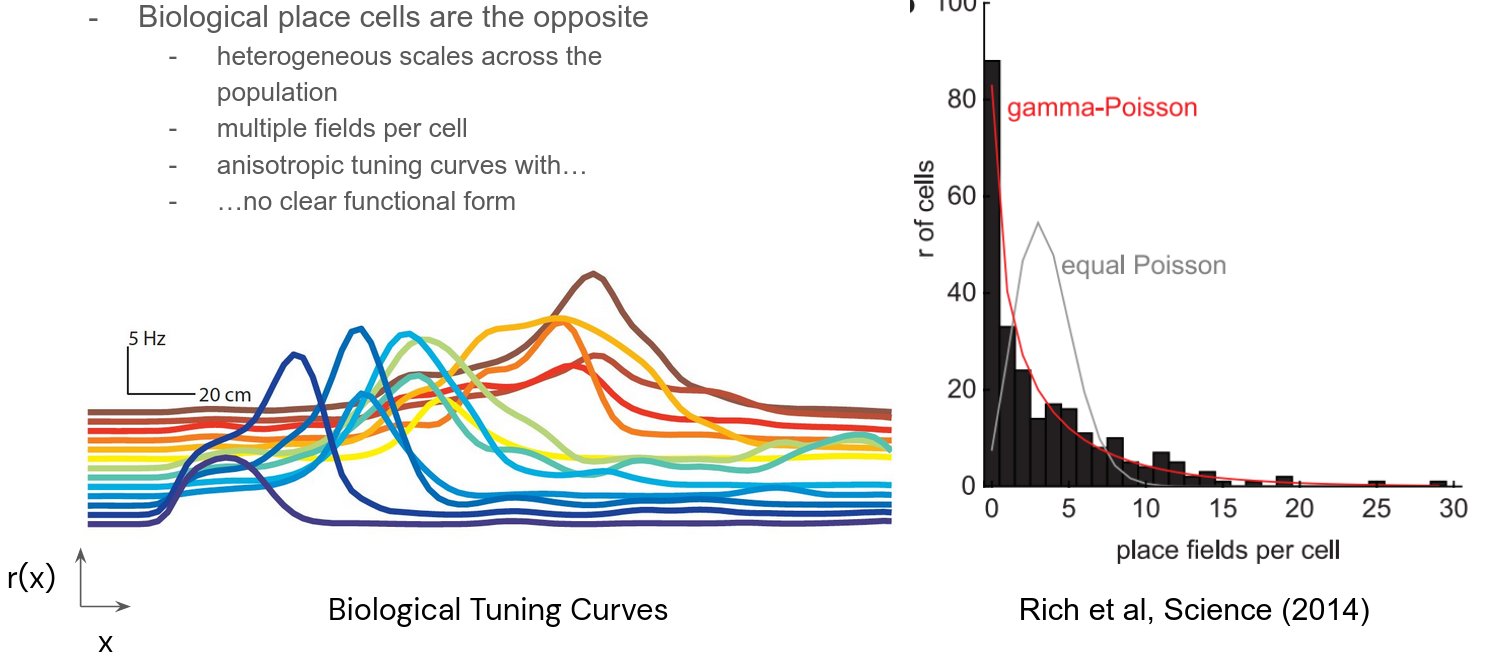
In order to produce grid-like units, one needs to use biologically incorrect supervised targets to bake the desired result into the networks. When grid-like units emerge, do they at least have key properties of grid cells (multiple modules, specific ratios btwn modules)? No! 8/15
Result 3: Multiple modules do not emerge - over a sweep around ideal hyperparameters, the grid period distribution is always unimodal, in contrast with the brain. Artificial grid periods are set by a hyperparameter choice and so do not provide a fundamental prediction. 9/15

Result 4: We can analytically explain why we observe these empirical results, using Fourier analysis of Turning instability similar to that in first-principles continuous attractor models. 10/15

Result 5: Grid-like unit emergence is highly sensitive to one hyperparameter – the width of the “place cells” – and occurs much less often if the hyperparameter is changed by a tiny amount, e.g. 12 cm works well, 11 cm and 13 cm do not 11/15
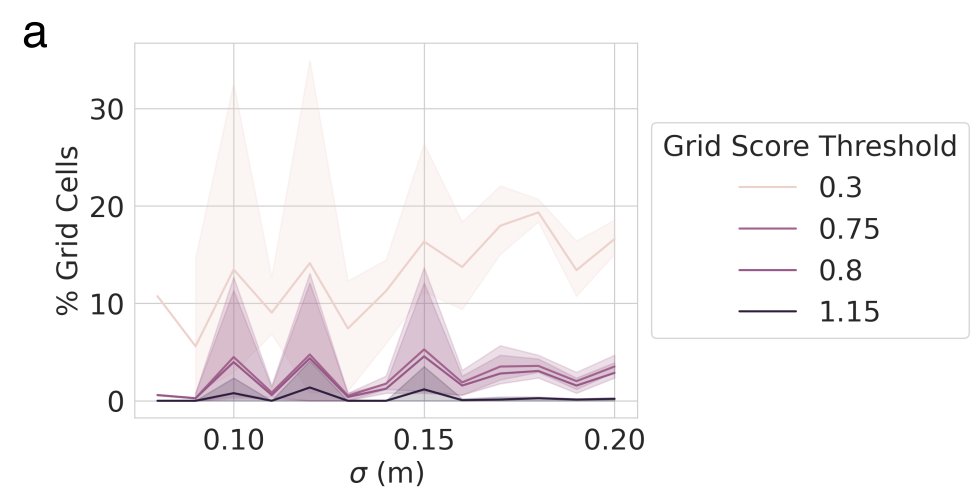
Result 6: What happens if we try making the supervised target “place cells” more biologically realistic by adding a small amount of heterogeneity and permitting place cells to have > 1 field? Grid-like units don’t appear, even though task performance is unaffected! 12/15

Takeaway for MEC/HPC: (1) Biologically incorrect supervised targets are specifically chosen to bake grid-like units into the networks, even though (2) the emergent grid-like units lack key properties of biological grid cells (multiple modules, module ratios). 13/15
Takeaway for NeuroAI: It is highly improbable that a path integration objective for ANNs would have produced grid cells as a novel prediction, had grid cells not been known to exist. Thus, our results challenge the notion that DL offers a free lunch for Neuroscience. 14/15
Questions, comments & criticisms welcome! 15/15
Photos from NeurIPS 2022
